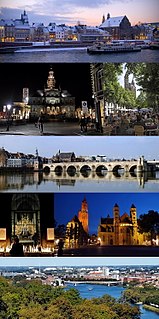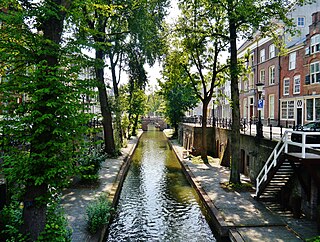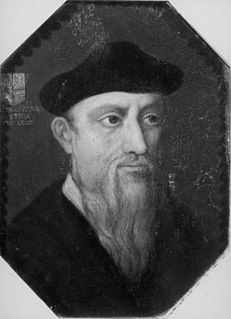
Maastricht is a city and a municipality in the southeast of the Netherlands. It is the capital and largest city of the province of Limburg. Maastricht is located on both sides of the Meuse, at the point where the Jeker joins it. It is adjacent to the border with Belgium.

The 16th century begins with the Julian year 1501 and ends with either the Julian or the Gregorian year 1600.

Wallonia is a region of Belgium. As the southern portion of the country, Wallonia is primarily French-speaking, and accounts for 55% of Belgium's territory and a third of its population. The Walloon Region was not merged with the French Community of Belgium, which is the political entity responsible for matters related mainly to culture and education, because the French Community of Belgium encompasses both Wallonia and the majority French-Speaking Brussels-Capital Region.

Jacques Arcadelt was a Franco-Flemish composer of the Renaissance, active in both Italy and France, and principally known as a composer of secular vocal music. Although he also wrote sacred vocal music, he was one of the most famous of the early composers of madrigals; his first book of madrigals, published within a decade of the appearance of the earliest examples of the form, was the most widely printed collection of madrigals of the entire era. In addition to his work as a madrigalist, and distinguishing him from the other prominent early composers of madrigals – Philippe Verdelot and Costanzo Festa – he was equally prolific and adept at composing chansons, particularly late in his career when he lived in Paris.

Ars subtilior is a musical style characterized by rhythmic and notational complexity, centered on Paris, Avignon in southern France, and also in northern Spain at the end of the fourteenth century. The style also is found in the French Cypriot repertory. Often the term is used in contrast with ars nova, which applies to the musical style of the preceding period from about 1310 to about 1370; though some scholars prefer to consider the ars subtilior a subcategory of the earlier style. Primary sources for the ars subtilior are the Chantilly Codex, the Modena Codex, and the Turin Manuscript.
Clément Janequin was a French composer of the Renaissance. He was one of the most famous composers of popular chansons of the entire Renaissance, and along with Claudin de Sermisy, was hugely influential in the development of the Parisian chanson, especially the programmatic type. The wide spread of his fame was made possible by the concurrent development of music printing.
A Christian Hebraist is a scholar of Hebrew who comes from a Christian family background/belief, or is a Jewish adherent of Christianity. The main area of study is that commonly known as the Old Testament to Christians, but Christians have occasionally taken an interest in the Talmud, and Kabbalah.
The decade of the 1470s in art involved some significant events.

Lodewijk de Bisschop, latinised as Ludovicus Episcopius was a Flemish Roman Catholic priest and composer of the late Renaissance and one of the first to compose secular songs in the Dutch language.

Peeter van der Phaliesen, latinised as Petrus Phalesius, French versions of name Pierre Phalèse and Pierre de Phaleys was a Flemish bookseller, printer and publisher. Aside from a number of literary and scientific works, his printing press is mainly known for its publications of music. Phalesius was the principal publisher of music active in the sixteenth-century Low Countries.

The partition of Belgium is a hypothetical situation which has been discussed by both Belgian and international media envisioning a split of the country along linguistic divisions, with each of the Flemish Community (Flanders) and the French-speaking Community (Wallonia) either becoming independent states or joining, respectively, The Netherlands and France. Both communities currently have a large degree of autonomy within the Belgian federation.

János Zsámboky or János Zsámboki or János Sámboki, was a Hungarian humanist scholar: physician, philologist and historian.
Singer Pur is a German vocal sextet founded in 1991 by five former members of the Regensburger Domspatzen to sing jazz repertoire. In 1994 a soprano joined the group and since then Singer Pur focussed more and more on early and romantic music. But the vocal ensemble has no stylistic limitations and its programmes include anything performable by voices. Singer Pur has recorded more than 20 CDs. Singer Pur has given concerts and workshops in more than 50 countries all over the world.
Martin Peudargent was a Flemish composer and chapel master of William, Duke of Jülich-Cleves-Berg in Düsseldorf.

Jan Belle was a Flemish composer from the Franco-Flemish School and a music theorist.


















